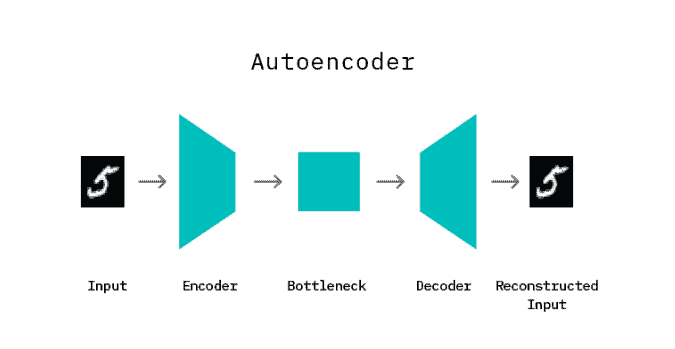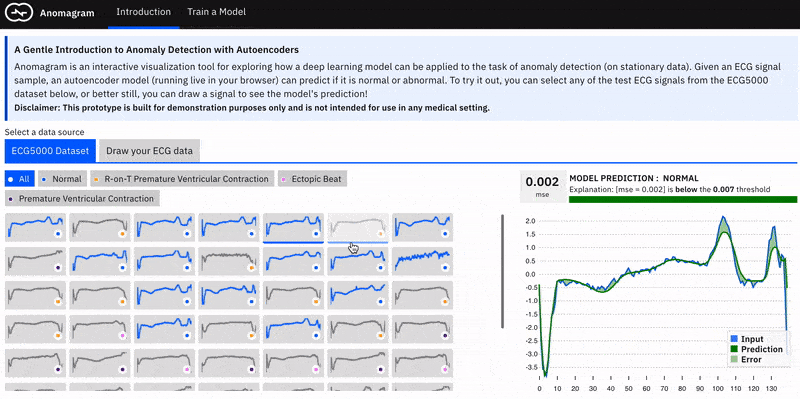We are excited to release Deep Learning for Anomaly Detection, the latest applied machine learning research report from Cloudera Fast Forward Labs.
Anomalies, often referred to as outliers, are data points or patterns in data that do not conform to a notion of normal behavior. Anomaly detection, then, is the task of finding those patterns in data that do not adhere to expected norms. The capability to recognize or detect anomalous behavior can provide highly useful insights across industries. Flagging or enacting a planned response when these unusual cases occur can save businesses time, money, and customers.
Automatically detecting and correctly classifying something unseen as anomalous is a challenging problem that has been tackled in many different manners over the years. Traditional machine learning approaches are sub-optimal when it comes to high dimensional data, because they fail to capture the complex structure in the data. This is where deep learning methods can be leveraged for the task.
Our report reviews a set of relevant deep learning model architectures including autoencoders, variational auto-encoders, generative adversarial networks and sequence-to-sequence methods, and addresses how they can be applied to the task of anomaly detection, comparing them in terms of training, inference and storage costs. Anomaly detection using each of these models is explored as a function of how they can be applied to first model normal behavior, and then this knowledge is exploited to identify deviations (anomalies). In the remainder of this blogpost, we’ll explore one of these approaches: autoencoders.
Anomaly Detection with Autoencoders
Autoencoders are neural networks designed to learn a low dimensional representation given some input data. They consist of two components: an encoder (which learns to map input data to a low dimensional representation, termed the bottleneck), and a decoder (which learns to map this low dimensional representation back to the original input data). By structuring the learning problem in this manner, the encoder network learns an efficient “compression” function which maps input data to a salient lower dimension representation, such that the decoder network is able to successfully reconstruct the original input data. The model is trained by minimizing the reconstruction error: the difference (mean squared error) between the original input and the reconstructed output produced by the decoder.

It is important to note that the mapping function learned by an autoencoder is specific to the training data distribution, i.e., an autoencoder will typically not succeed at reconstructing data which is significantly different from data it has seen during training. This property of learning a distribution specific mapping (as opposed to a generic linear mapping) is particularly useful for the task of anomaly detection.
Applying an autoencoder for anomaly detection follows the general principle of first modeling normal behaviour and subsequently generating an anomaly score for a new data sample. To model normal behaviour we train the autoencoder on a normal data sample. This way, the model learns a mapping function that successfully reconstructs normal data samples with a very small reconstruction error (the difference between the actual sample and the version reconstructed by the model). This behavior is replicated at test time, where the reconstruction error is small for normal data samples, and large for abnormal data samples. To identify anomalies, we use the reconstruction error score as an anomaly score and flag samples with reconstruction errors above a given threshold.
Anomagram – Identifying Anomalous Signals
To illustrate autoencoders with a concrete example, we present Anomagram. Anomagram is an interactive visualization that walks the user through steps required to apply a deep autoencoder model in identifying anomalies. Anomagram is created as both a learning tool and a prototype of what an ML product interface could look like.
The interface, which contains two main sections, is built with Tensorflow.js and allows install-free experimentation in the browser. The first part of the interface introduces important concepts (autoencoders, data transformations, thresholds) paired with appropriate interactive visualizations. Users can apply a trained autoencoder to test data from the ECG5000 dataset, and view how it assigns an anomaly tag based on a selected threshold. In addition, the user can craft (adversarial) input by drawing a signal and also observe how the model behaves.

The second part (pictured below) is geared towards users who are interested in additional technical depth and allows you to design, train, and evaluate an autoencoder model entirely in the browser. It provides a direct manipulation interface that allows the user to:
- specify a model (add/remove layers and units within layers)
- modify model parameters (training steps, batchsize, learning rate, regularizer, optimizer)
- modify training/test data parameters (data size, data composition)
- train the model
and evaluate model performance (visualization of accuracy, precision, recall, false positive, false negative, ROC metrics) as each parameter is changed.

Learn More In Our Upcoming Webinar
While deep learning approaches for anomaly detection like autoencoders can yield remarkable results on complex and high dimensional data, there are several factors that influence the choice of approach when building an anomaly detection application. In our report we survey various approaches, highlight their pros and cons, and discuss resources and recommendations for setting up an anomaly detection in a production environment, as well as technical and ethical considerations.
Please join us on Thursday, February 13th at 10:00am PST (1:00pm EST) for a live webinar on “Deep Learning for Anomaly Detection”. Nisha Muktewar and Victor Dibia of Cloudera Fast Forward Labs will be joined by Meir Toledano, Algorithms Engineer at Anodot. Register today to save your seat!




As a manager of a surveillance unit with the AMF, I would be very happy to attend this webinar.
Hello, Thanks for sharing this great information on Machine Learning, It’s really very helpful and easy to learn and if you can start your Machine Learning training then you can visit the site link.
http://pythonandmltrainingcourses.com/courses/best-deep-learning-training-in-delhi/